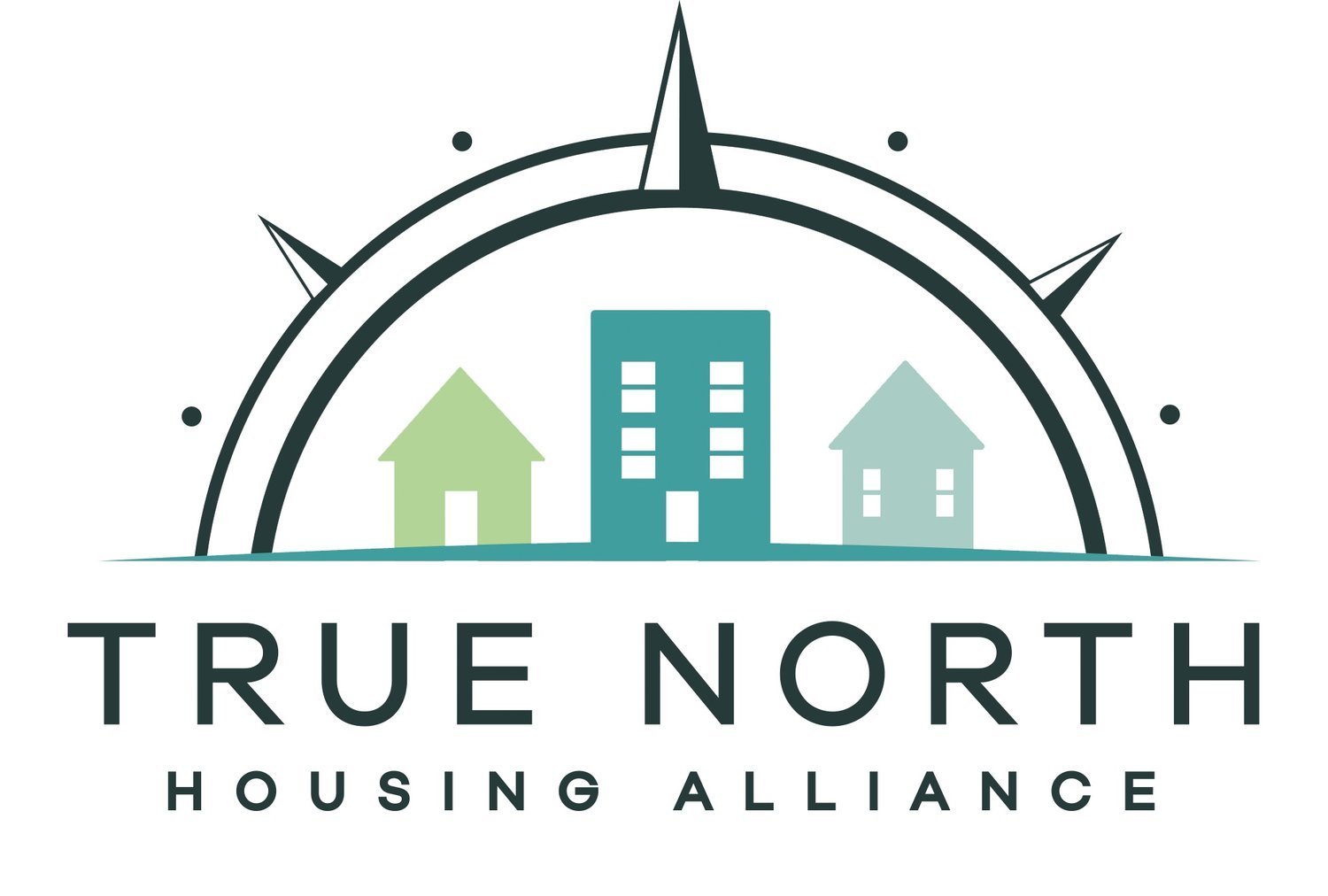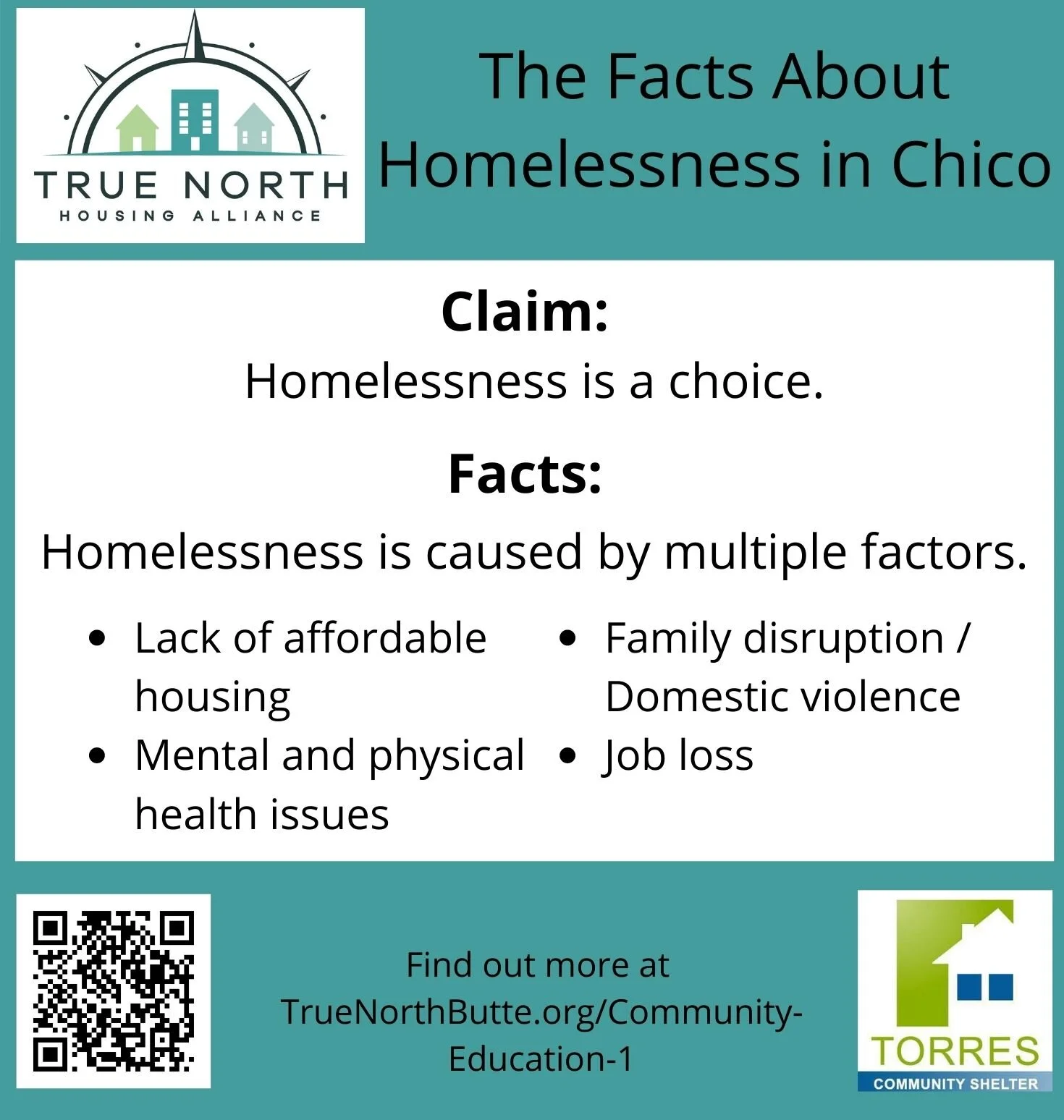Understanding Chronic Homelessness
Dear CN&R Reader,
As a member of the Board of Directors for True North Housing Alliance, I would like to thank you for visiting our site. Please take some time to explore our home page, where we describe the work we are doing, and our blog, where we share the accomplishments of those we serve.
In this message, I would like to discuss the U.S. Department of Housing and Urban Development (HUD) Continuum of Care Program and chronic homelessness. I will then briefly discuss how this informed our decision to change the name of the Torres Community Shelter's parent organization to True North Housing Alliance.
Launching the CoC
HUD established the Continuum of Care (CoC) Program in 1994 with the intent to stimulate community-wide planning and coordination of programs for individuals and families who are homeless. In order for a community to receive funding, the community must come together to submit a single comprehensive CoC application.
Butte County accomplishes this through the work of the Butte Countywide Homeless Continuum of Care, which lists 30 community organizations as members. HUD encourages that all community stakeholders engage with this process. (Stakeholder has several definitions, here I am describing "one who is involved in or affected by a course of action.")
In 2019, California was awarded $441,164,621 through the CoC program, of which the Butte County CoC received $67,500.
This may leave you with the question "why?"
The answer can be found in the evidence base that informs policy decisions. Although the HUD CoC Program recognizes "Emergency Shelter as an important part of the homeless continuum of care, in 2009 they identified the ending of chronic homelessness as a primary goal. At the time, 10% of homeless people were characterized as Chronically Homeless Individuals.
(d.). A homeless individual with a disability who lives either in a place not meant for human habitation, a safe haven, or in an emergency shelter, or in an institutional care facility if the individual has been living in the facility for fewer than 90 days and had been living in a place not meant for human habitation, a safe haven, or in an emergency shelter immediately before entering the institutional care facility.
In order to meet the “chronically homeless” definition, the individual also must have been living as described above continuously for at least 12 months, or on at least four separate occasions in the last 3 years, where the combined occasions total a length of time of at least 12 months. Each period separating the occasions must include at least 7 nights of living in a situation other than a place not meant for human habitation, in an emergency shelter, or in a safe haven.
Please refer to the HUD website for details of Butte County's annual Homeless Population and Subpopulation Report.
Although chronically homeless individuals make up only a portion of the homeless population as a whole, the severity of their situation results in utilization of 50% of homeless assistance resources.
By addressing the needs of this relatively small group, there will be an increase in the funds available to serve and stabilize other populations living on the edge of poverty, according to HUD.
Addressing Chronic Homelessness
Since 2009, many have looked at strategies to end chronic homelessness, including Dr. Deborah Padgett, at the NYU Silver School of Social Work. She interviewed 43 homeless people in New York City in an effort to understand why people would live without shelter.
In an article reporting on the study, she was quoted to have said:
“Virtually all barriers street homeless New Yorkers face stem from bureaucratic policies that, however well-intentioned, do not address their diverse needs,” wrote Padgett and her colleagues. “Thus, long delays and poor communication, combined with crowded, unsafe shelters, lead to frustration and alienation.”
True North Housing Alliance (TNHA) was named such to highlight the efforts and programs that move people from homelessness to appropriate housing.
Unfortunately, homeless outreach methods to address the chronically homeless individuals in Chico have been mostly ineffective. Although TNHA, along with our community partners such as the Chico Housing Action Team, has been able to facilitate many people moving out of homelessness, the suffering in our City Plaza remains an ever present reminder that there is work to be done.
I chose to serve on the TNHA Board because of the organization’s proven record of service to the Chico community.
By providing emergency shelter to those affected by the multiple factors we noted in our ad, we are able to successfully move people forward and out of homelessness into supported housing relatively quickly, with few exceptions.
These are the hidden homeless, the hundreds of individuals who utilize our services every year when crisis happens and housing is lost.
It is clear to me that our community must come together to implement evidence-based practices to serve the chronically homeless individuals.
While contracting as a psychiatrist with Butte County Behavioral Health and serving for a short time as the Interim Medical Director (Sept 2018 through June 2019), I became intimately aware of the burden our county faces with regard to our chronically homeless population. More importantly, I became aware of the amount of suffering and often times exploitation that these individuals experience.
I am committed to working with TNHA and other community partners (including government, business and nonprofit) in order to develop, implement, and assess evidence-based practices that will meet the individual needs of this vulnerable population. I am grateful to serve on TNHA’s Board, knowing that the organization’s mission aligns with mine.
The issues of homelessness crosses multiple disciplines. If you have expertise in an area that intersects homelessness (i.e., Policy, Secular Ethics, Environmental Protection, Human Rights, strengthening our communities ability to attract talent) please consider joining us.
In conclusion, TNHA is grateful for the support of our community and we look forward to continuing the conversation.
Sincerely,
Lori L LaRiviere, MD
Psychiatrist
Board Member, True North Housing Alliance

